Abstract
A new method has been developed for measuring virtually continuous distributions of ventilation-perfusion ratios (V̇A/Q̇) based on the steadystate elimination of six gases of different solubilities. The method is applied here to 12 normal subjects, aged 21—60. In nine, the distributions were compared breathing air and 100% oxygen, while in the remaining three, effects of changes in posture were examined. In four young semirecumbent subjects (ages 21—24) the distributions of blood flow and ventilation with respect to V̇A/Q̇ were virtually log-normal with little dispersion (mean log standard deviations 0.43 and 0.35, respectively). The 95.5% range of both blood flow and ventilation was from V̇A/Q̇ ratios of 0.3—2.1, and there was no intrapulmonary shunt (V̇A/Q̇ of 0). On breathing oxygen, a shunt developed in three of these subjects, the mean value being 0.5% of the cardiac output. The five older subjects (ages 39—60) had broader distributions (mean log standard deviations, 0.76 and 0.44) containing areas with V̇A/Q ratios in the range 0.01—0.1 in three subjects. As for the young subjects, there was no shunt breathing air, but all five developed a shunt breathing oxygen (mean value 3.2%), and in one the value was 10.7%. Postural changes were generally those expected from the known effects of gravity, with more ventilation to high VA/Q areas when the subjects were erect than supine. Measurements of the shunt while breathing oxygen, the Bohr CO2 dead space, and the alveolar-arterial oxygen difference were all consistent with the observed distributions. Since the method involves only a short infusion of dissolved inert gases, sampling of arterial blood and expired gas, and measurement of cardiac output and minute ventilation, we conclude that it is well suited to the investigation of pulmonary gas exchange in man.
Full text
PDF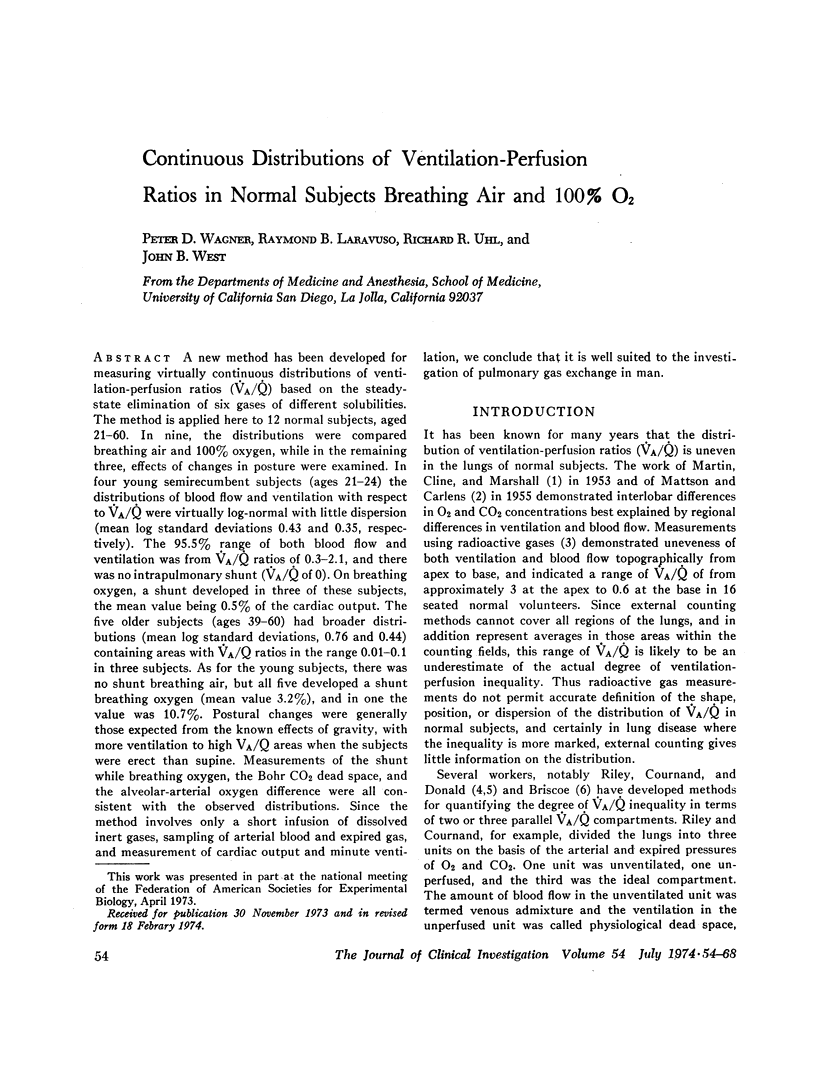
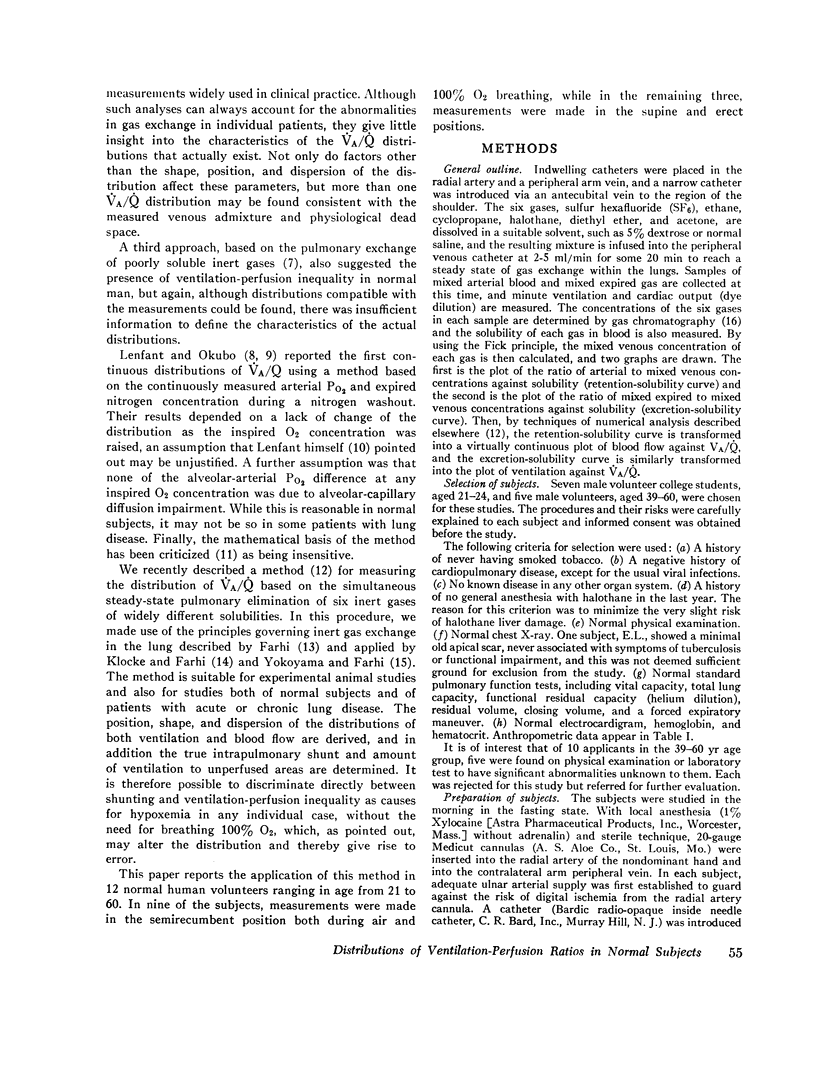


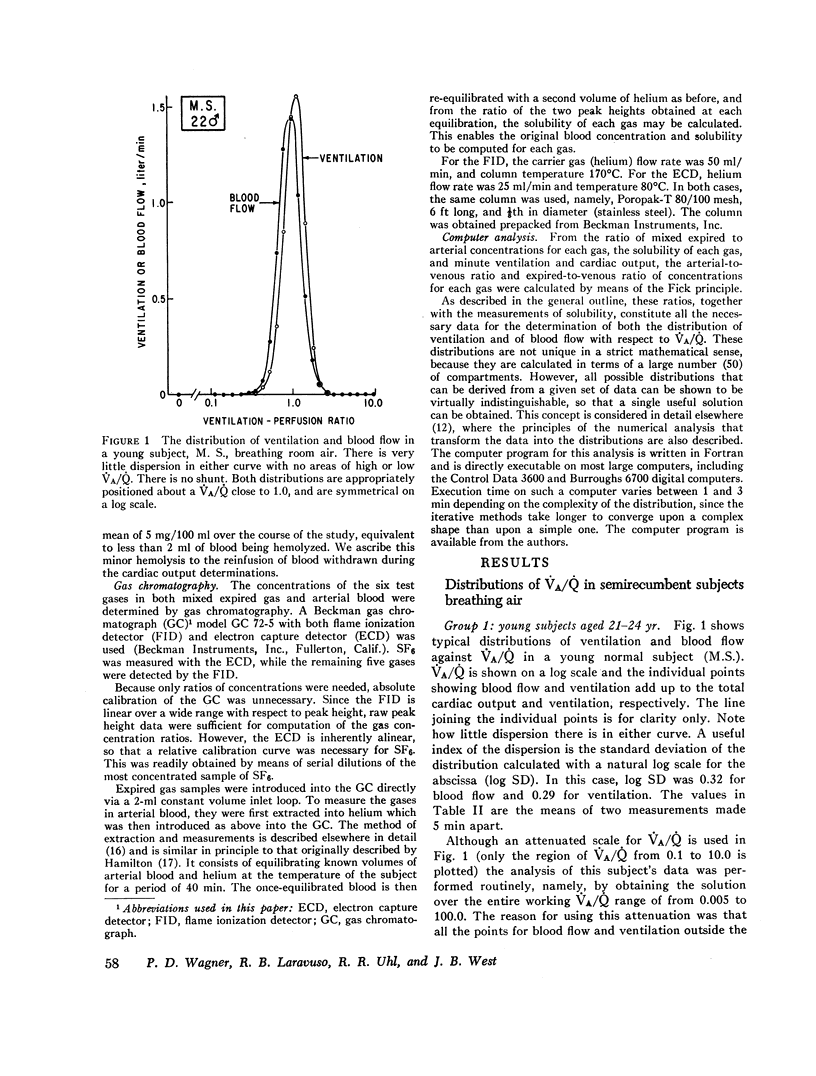

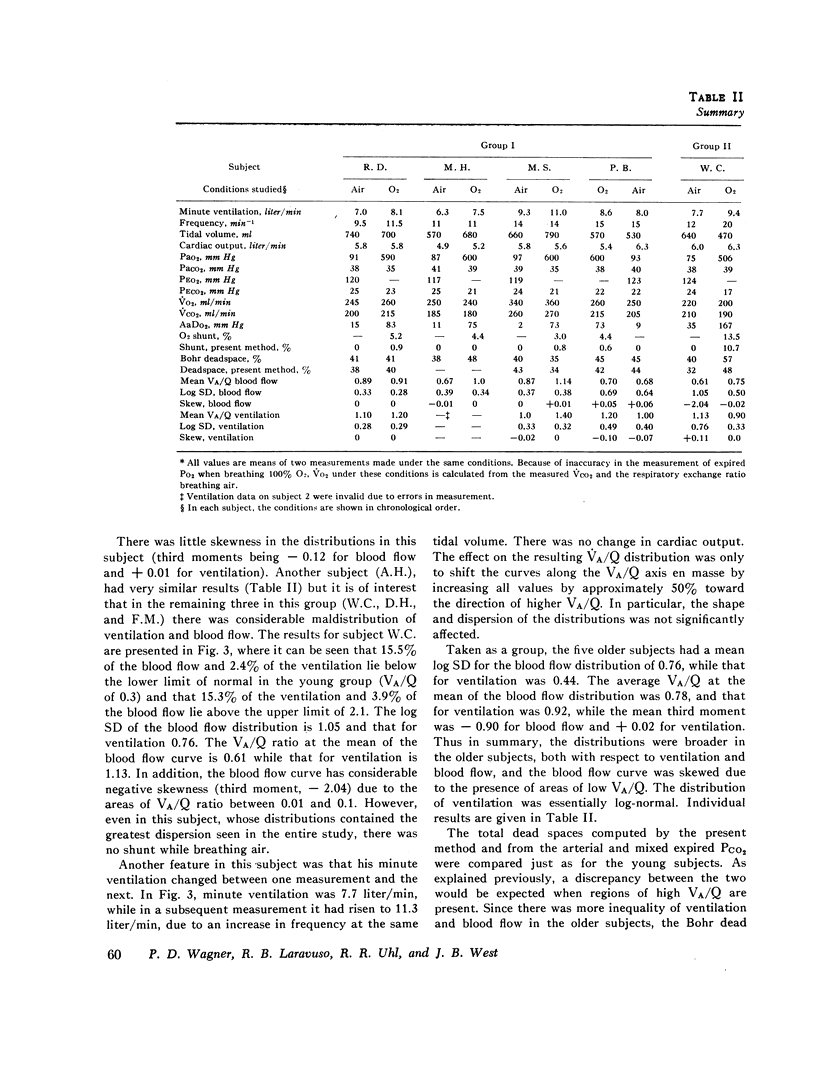
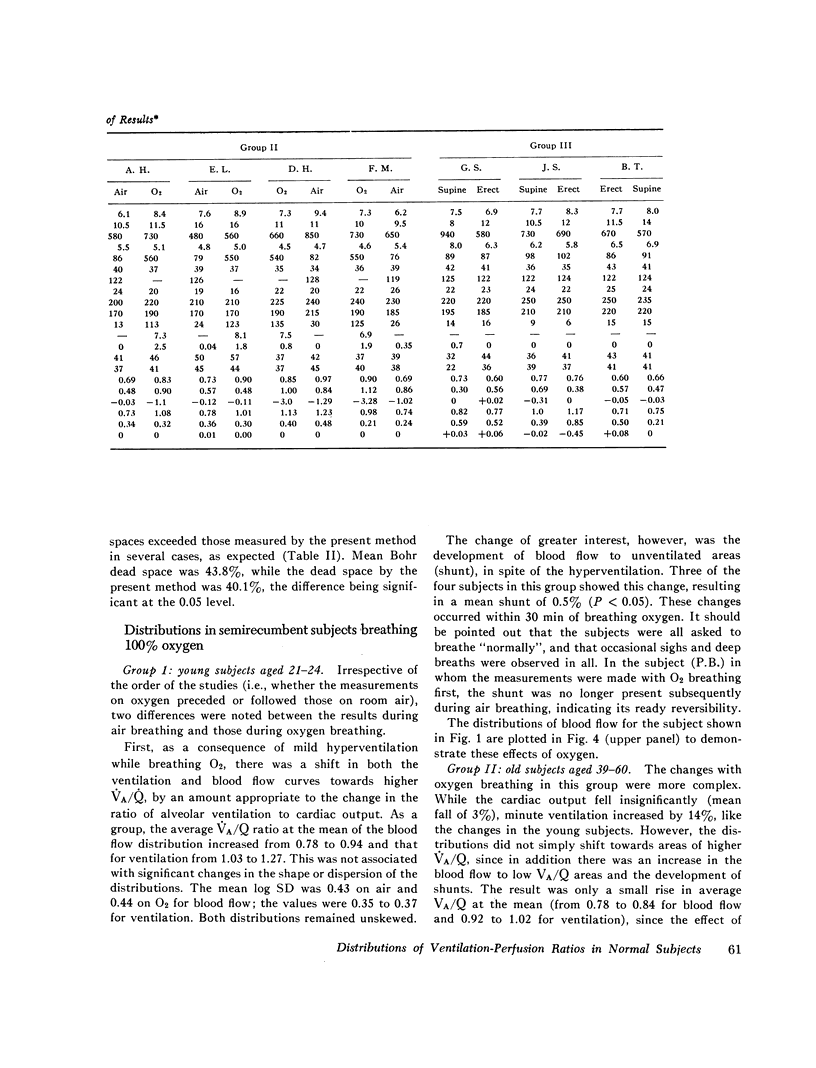

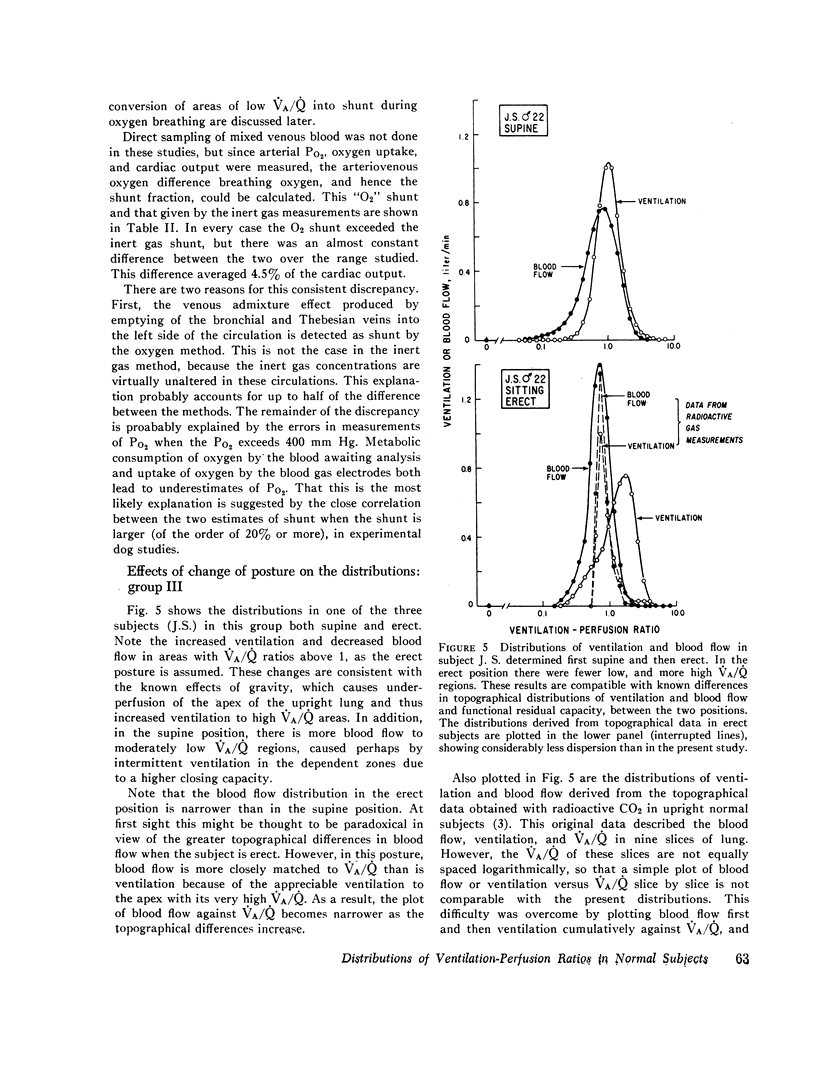
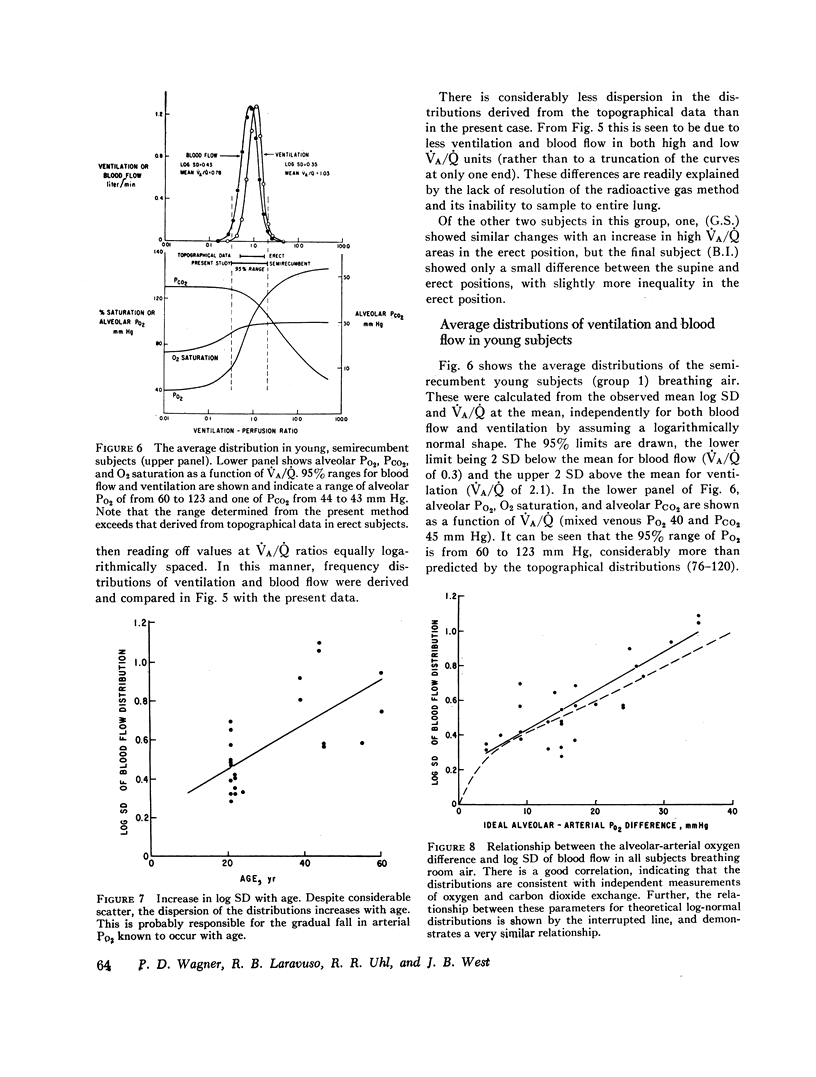


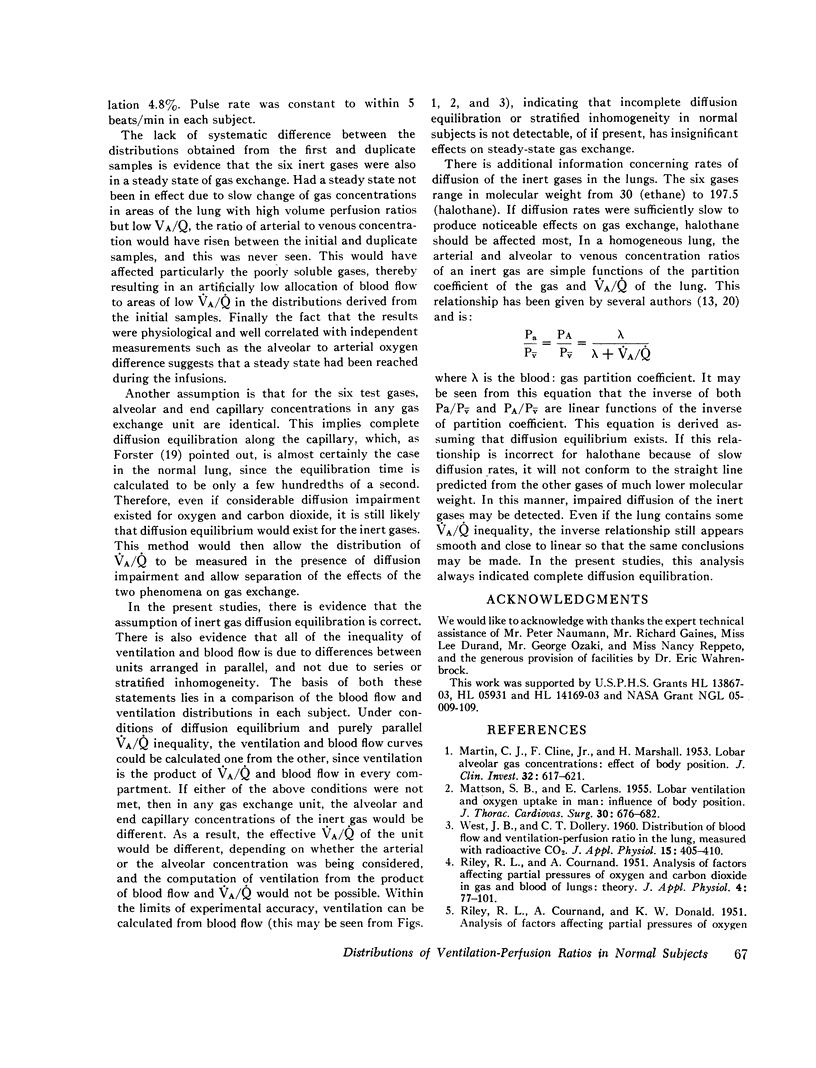
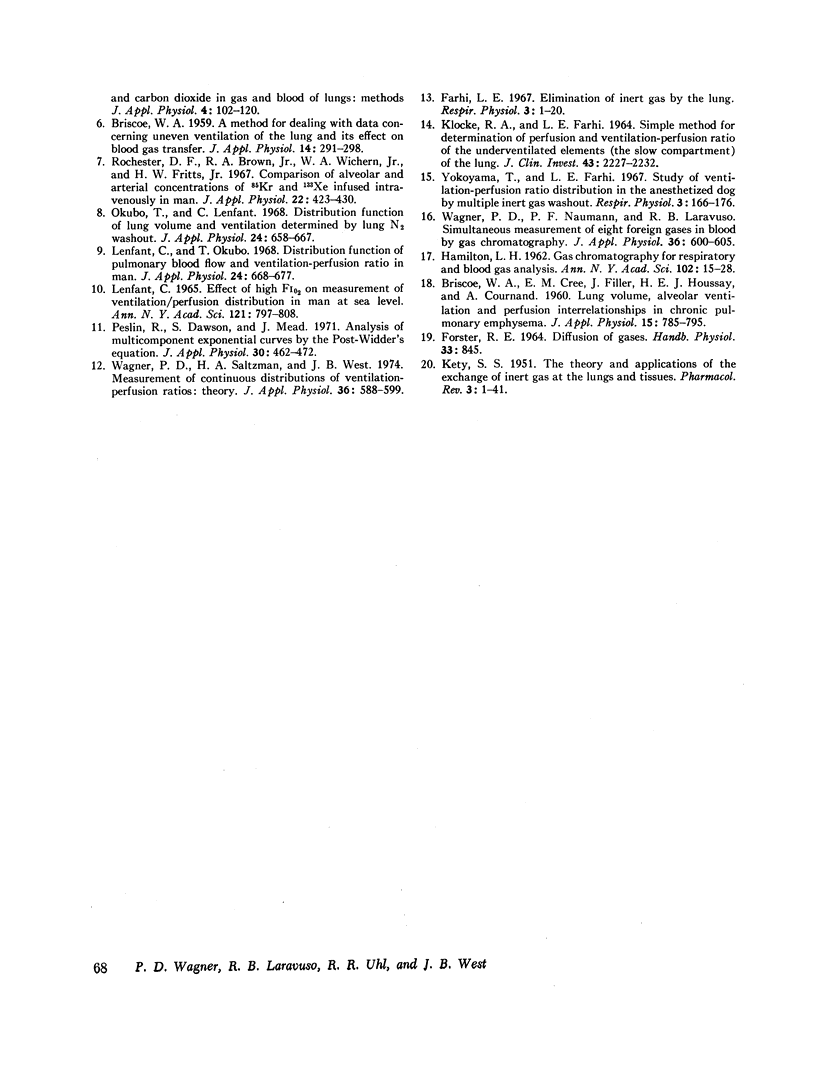
Selected References
These references are in PubMed. This may not be the complete list of references from this article.
- BRISCOE W. A. A method for dealing with data concerning uneven ventilation of the lung and its effects on blood gas transfer. J Appl Physiol. 1959 May;14(3):291–298. doi: 10.1152/jappl.1959.14.3.291. [DOI] [PubMed] [Google Scholar]
- Farhi L. E. Elimination of inert gas by the lung. Respir Physiol. 1967 Aug;3(1):1–11. doi: 10.1016/0034-5687(67)90018-7. [DOI] [PubMed] [Google Scholar]
- HAMILTON L. H. Gas chromatography for respiratory and blood gas analysis. Ann N Y Acad Sci. 1962 Oct 31;102:15–28. doi: 10.1111/j.1749-6632.1962.tb13622.x. [DOI] [PubMed] [Google Scholar]
- KETY S. S. The theory and applications of the exchange of inert gas at the lungs and tissues. Pharmacol Rev. 1951 Mar;3(1):1–41. [PubMed] [Google Scholar]
- KLOCKE R. A., FARHI L. E. SIMPLE METHOD FOR DETERMINATION OF PERFUSION AND VENTILATION-PERFUSION RATIO OF THE UNDERVENTILATED ELEMENTS (THE SLOW COMPARTMENT) OF THE LUNG. J Clin Invest. 1964 Dec;43:2227–2232. doi: 10.1172/JCI105096. [DOI] [PMC free article] [PubMed] [Google Scholar]
- LENFANT C. EFFECT OF HIGH FIO-2 ON MEASUREMENT OF VENTILATION/PERFUSION DISTRIBUTION IN MAN AT SEA LEVEL. Ann N Y Acad Sci. 1965 Mar 24;121:797–808. doi: 10.1111/j.1749-6632.1965.tb14249.x. [DOI] [PubMed] [Google Scholar]
- Lenfant C., Okubo T. Distribution function of pulmonary blood flow and ventilation-perfusion ratio in man. J Appl Physiol. 1968 May;24(5):668–677. doi: 10.1152/jappl.1968.24.5.668. [DOI] [PubMed] [Google Scholar]
- MARTIN C. J., CLINE F., Jr, MARSHALL H. Lobar alveolar gas concentrations; effect of body position. J Clin Invest. 1953 Jul;32(7):617–621. doi: 10.1172/JCI102772. [DOI] [PMC free article] [PubMed] [Google Scholar]
- MATTSON S. B., CARLENS E. Lobar ventilation and oxygen uptake in man; influence of body position. J Thorac Surg. 1955 Dec;30(6):676–682. [PubMed] [Google Scholar]
- Okubo T., Lenfant C. Distribution function of lung volume and ventilation determined by lung N2 washout. J Appl Physiol. 1968 May;24(5):658–667. doi: 10.1152/jappl.1968.24.5.658. [DOI] [PubMed] [Google Scholar]
- Peslin R., Dawson S., Mead J. Analysis of multicomponent exponential curves by the Post-Widder's equation. J Appl Physiol. 1971 Apr;30(4):462–472. doi: 10.1152/jappl.1971.30.4.462. [DOI] [PubMed] [Google Scholar]
- RILEY R. L., COURNAND A. Analysis of factors affecting partial pressures of oxygen and carbon dioxide in gas and blood of lungs; theory. J Appl Physiol. 1951 Aug;4(2):77–101. doi: 10.1152/jappl.1951.4.2.77. [DOI] [PubMed] [Google Scholar]
- RILEY R. L., COURNAND A., DONALD K. W. Analysis of factors affecting partial pressures of oxygen and carbon dioxide in gas and blood of lungs; methods. J Appl Physiol. 1951 Aug;4(2):102–120. doi: 10.1152/jappl.1951.4.2.102. [DOI] [PubMed] [Google Scholar]
- Rochester D. F., Brown R. A., Jr, Wichern W. A., Jr, Fritts H. W., Jr Comparison of alveolar and arterial concentrations of 85Kr and 133Xe infused intravenously in man. J Appl Physiol. 1967 Mar;22(3):423–430. doi: 10.1152/jappl.1967.22.3.423. [DOI] [PubMed] [Google Scholar]
- WEST J. B., DOLLERY C. T. Distribution of blood flow and ventilation-perfusion ratio in the lung, measured with radioactive carbon dioxide. J Appl Physiol. 1960 May;15:405–410. doi: 10.1152/jappl.1960.15.3.405. [DOI] [PubMed] [Google Scholar]
- Wagner P. D., Saltzman H. A., West J. B. Measurement of continuous distributions of ventilation-perfusion ratios: theory. J Appl Physiol. 1974 May;36(5):588–599. doi: 10.1152/jappl.1974.36.5.588. [DOI] [PubMed] [Google Scholar]
- Yokoyama T., Farhi L. E. Study of ventilation-perfusion ratio distribution in the anesthetized dog by multiple inert gas washout. Respir Physiol. 1967 Oct;3(2):166–176. doi: 10.1016/0034-5687(67)90007-2. [DOI] [PubMed] [Google Scholar]


